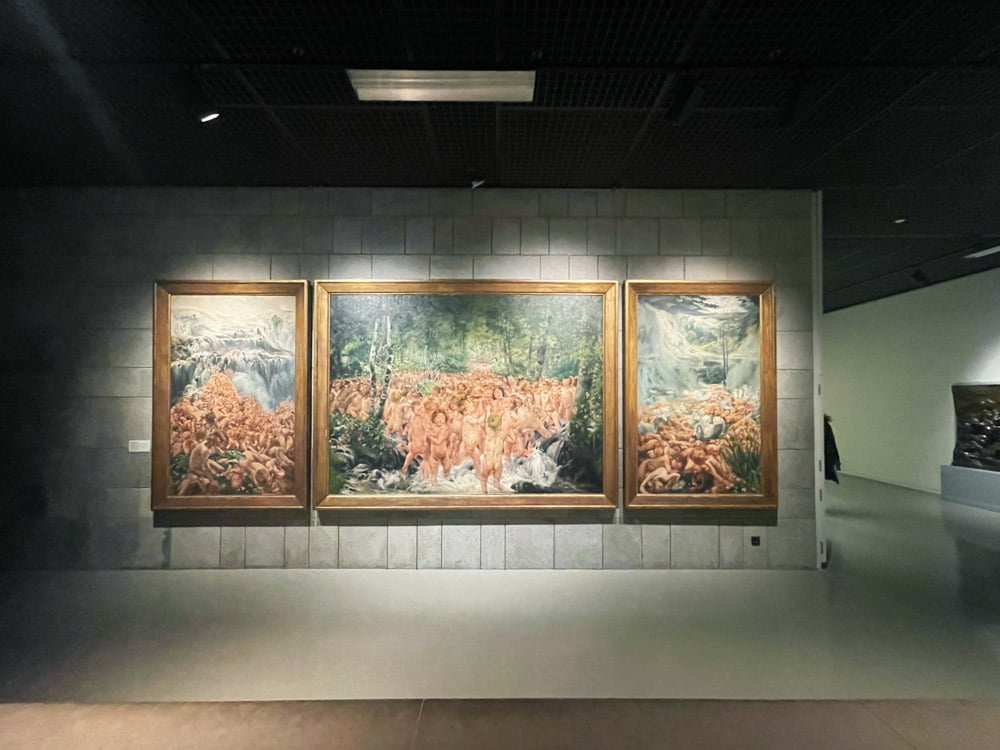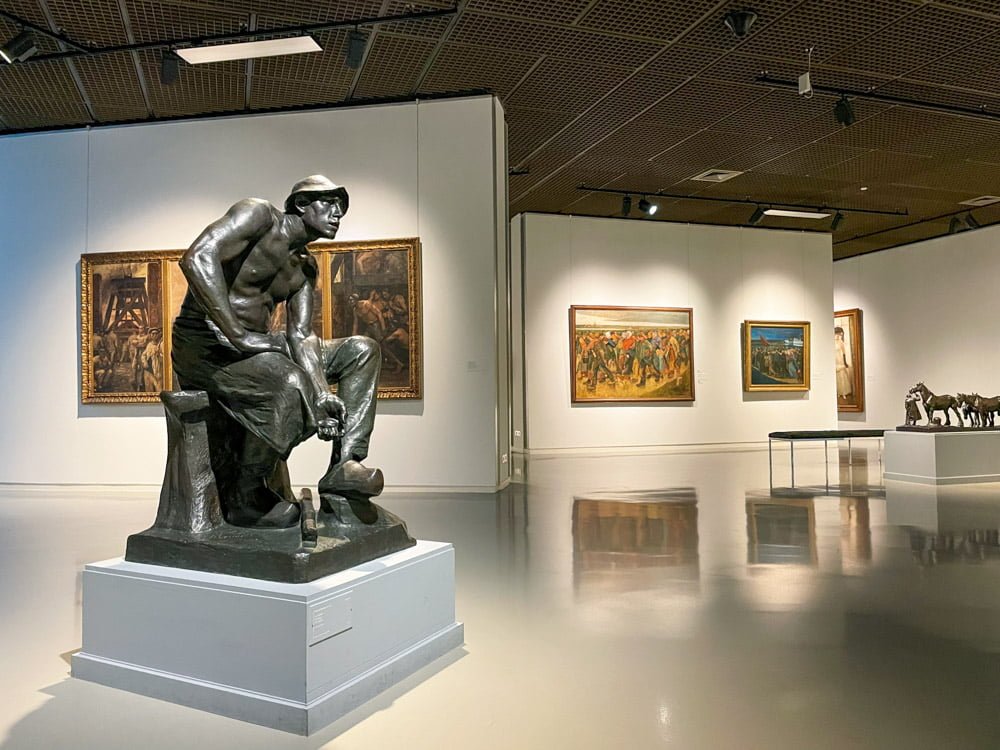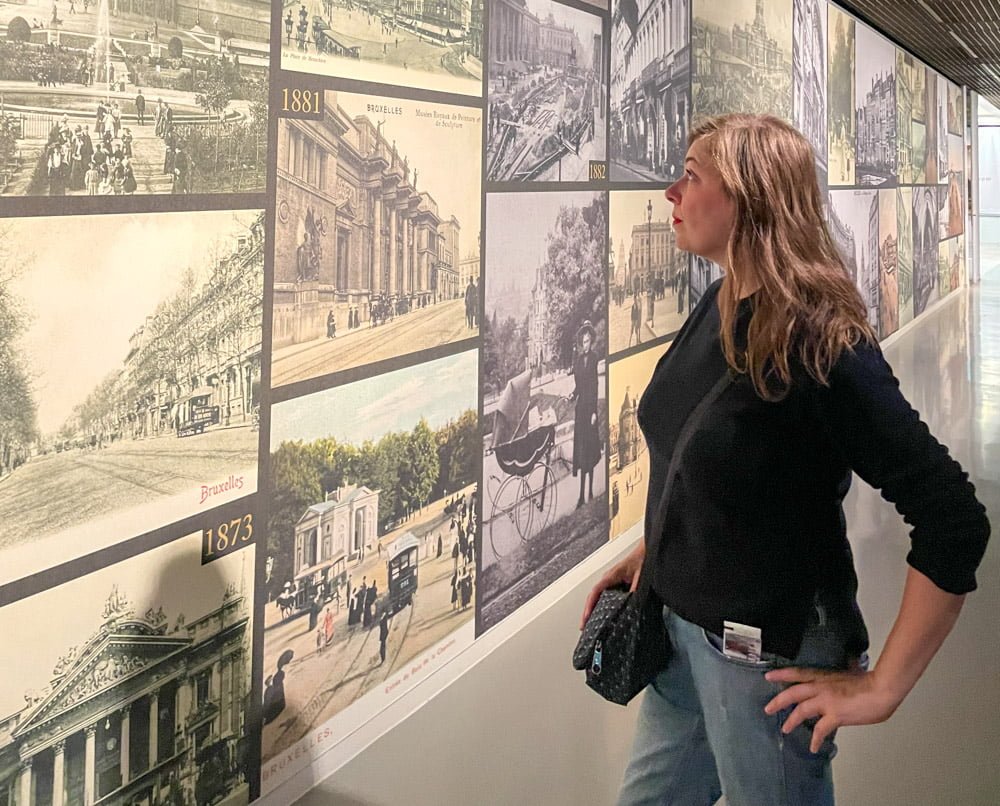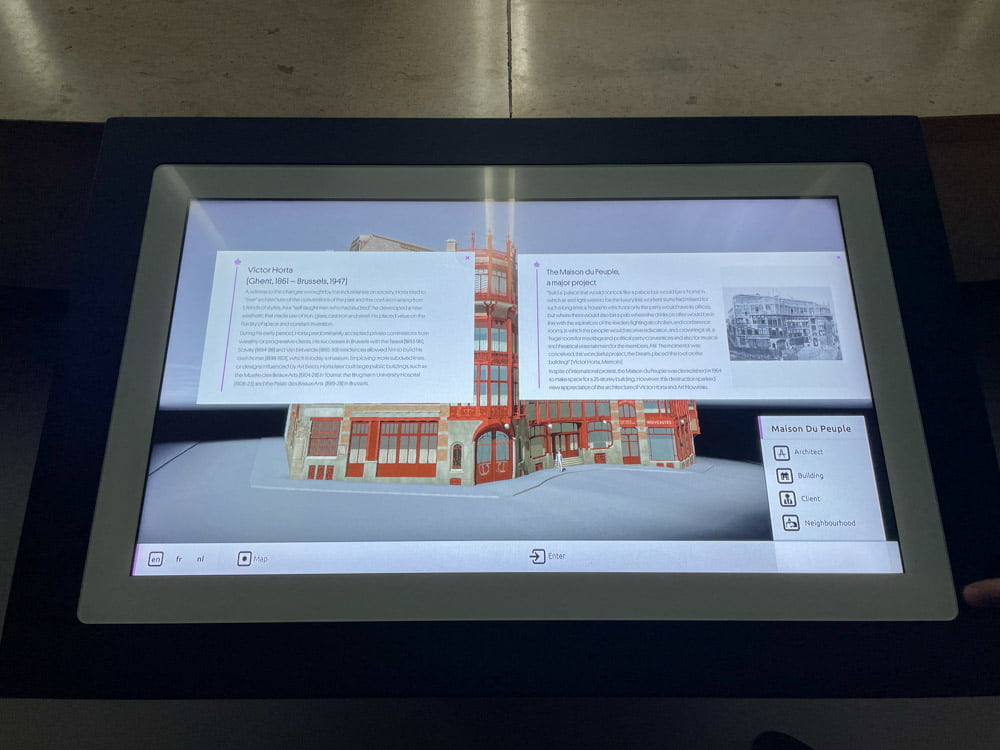The Fin-de-Siecle Museum is a real highlight for Art Nouveau lovers, as it transports you to the atmosphere of Brussels in the 1900s with paintings, drawings, watercolours, engravings, sculptures and decorative objects by artists of the late 19th and early 20th century. Paintings, statues, furniture and interactive stations enrich the museum experience and help you discover the artistic energy of the period.
Table of Contents
Fin-de-Siècle Museum in Brussels: art and architecture
The Fin-de-Siècle Museum showcases art from the late 1800s to the early 1900s, a time when Brussels was a hub of artistic activity and the home of Art Nouveau. Spread across three floors, the museum features paintings, drawings, sculptures, jewellery, furniture, and architecture dating back to the period between 1865 and 1914.
PLAN YOUR TRIP TO BRUSSELS
Make the most of your trip to Brussels by purchasing the Brussels City Card online. With access to the city’s top museums and free public transport, it’s the smartest way to explore the city and save money.
To stay connected in Brussels, purchase an Airalo eSim online for phone and data coverage during your trip to Belgium.

Overall, the museum exhibits works by more than 30 visual artists, such as Georges Minne, Léon Spilliaert, James Ensor, Constantin Meunier and Fernand Khnopff, as well as writers, architects, poets and musicians, including Victor Horta, Octave Maus and Henry van de Velde. The artists exhibited are mainly Belgian, but at the Musée Fin-de-Siècle in Brussels, you can also see some works by international artists, including Vincent van Gogh, Paul Gauguin and Georges Seurat.
The tour passes through paintings and sculptures, including one of the many versions of Auguste Rodin’s famous Thinker. Many paintings are in large format and depict the changes in Belgian and European society of the period without the need for explanation. Brussels at the end of the 19th century was a crossroads of culture and new ideas, as you can discover through the exhibition rooms.

Drawings on paper
The Fin-de-Siècle Museum in Brussels exhibits various works, including drawings, pastels and watercolours, created between 1868 and 1914. These pieces of art showcase the significance of paper techniques during this era. However, they can’t be displayed permanently due to their susceptibility to light.
Every six months, they are replaced with other artworks. Therefore, if you revisit the museum, you may find different drawings from those you saw before. The last time I visited, the exhibition was about theatre, featuring magnificent dioramas depicting the backgrounds used on stage.

Art Nouveau Architecture
The end of the 19th century was the peak of Art Nouveau architecture in Brussels. Victor Horta, considered the most renowned Belgian architect, designed many buildings in this style. However, the urban planning of the 1960s caused the loss of many Art Nouveau buildings. ‘Bruxellisation’ led to the indiscriminate demolition of historic buildings, replacing them with modern skyscrapers to redevelop entire city areas.
The surviving structures are now UNESCO World Heritage sites. The Fin-de-Siècle Museum aims to preserve the memory of these buildings and those that still stand out in the Belgian capital’s skyline. The museum houses a photo gallery and interactive stations.

On the map of Brussels, you can search for Art Nouveau residential and commercial buildings. The interactive displays explain the structures’ styles, functions, and architects and show what was eventually built in their place. However, it is sad to discover that anonymous blocks of flats have sometimes replaced real works of art, as with the People’s House in Place Emile Vandervelde, an imposing work by Victor Horta.

Art Nouveau objects and furniture
The Fin-de-Siècle Museum displays Art Nouveau furniture, objects, paintings, and statues. Victor Horta, a Belgian architect, transformed the approach towards designing residential buildings, incorporating interior spaces, lighting, furniture, and decoration in his designs.
You can see first-hand Art Nouveau vases, objects, chairs, and furniture, and marvel at the intricate decorations inspired by nature. The objects and furniture feature floral motifs and sinuous lines that are typical of this style, with glass being widely used.

Practical information to visit the Fin-de-Siècle Museum in Brussels
The Fin-de-Siècle Museum is part of the Royal Museums of Fine Arts of Belgium so you can get in with the Brussels City Card which offers free access to many museums in Brussels. Alternatively, you can buy a combined ticket with the Musée Oldmasters, specialising in the great masters of Flemish painting for €10.
Children and young people up to 19 years of age get in free, while audio guides are charged for all and must be hired at the entrance for €4. The Royal Museums of Fine Arts of Belgium are free every first Wednesday of the month from 1:00 pm, but the free admission does not include temporary exhibitions.
The Fin-de-Siècle Museum in Brussels is open Tuesday to Friday from 10:00 am to 5:00 pm. On weekends it opens and closes one hour later, from 11:00 am to 6:00 pm.

How to get to the Fin-de-Siècle Museum in Brussels
The Fin-de-Siècle Museum is part of the Royal Museums of Fine Arts of Belgium, with several major museums, including the Magritte Museum, clustered around Place Royale. This central location makes it easy to reach on foot or by public transport. Once you arrive in the square, the museum entrances are clearly signposted, so finding your way is pretty easy.
Musée Fin-de-Siècle
Rue de la Régence, 3
1000 Brussels
Where to stay in Brussels
I have visited Brussels many times, and I can confidently say that the city offers a wide range of accommodation options to suit different travel styles. If you are looking for a hotel in the city centre, the Pillows City Hotel Brussels Centre is an excellent choice. It is located just 100 metres from Brussels Central Station and within a five-minute walk of the Grand Place and the Manneken Pis statue, making it ideal for exploring the city on foot.
Right in the heart of Brussels, Made in Catherine is located on Place Sainte-Catherine, only a ten-minute walk from the Grand Place. This small hotel is particularly appreciated for its fantastic buffet breakfast and its lively yet authentic neighbourhood.
In the European Quarter, for an especially romantic stay, Faubourg 21 is a refined five-star hotel offering a spa, wellness centre and a terrace. It is a great option if you want to combine sightseeing with relaxation in an elegant setting.
If you prefer staying in an apartment, Teddy Picker offers well-designed studios with a garden or terrace. The property also features a family-friendly restaurant serving Belgian and international cuisine for lunch and dinner, including vegetarian and vegan options.
If you are a fan of Art Nouveau, it’s well worth a visit the Fin-de-Siècle Museum, a real journey back in time through the art of the 1900s. Feel free to comment if you already knew this museum or if you put it on your list of museums to visit after reading this article.
